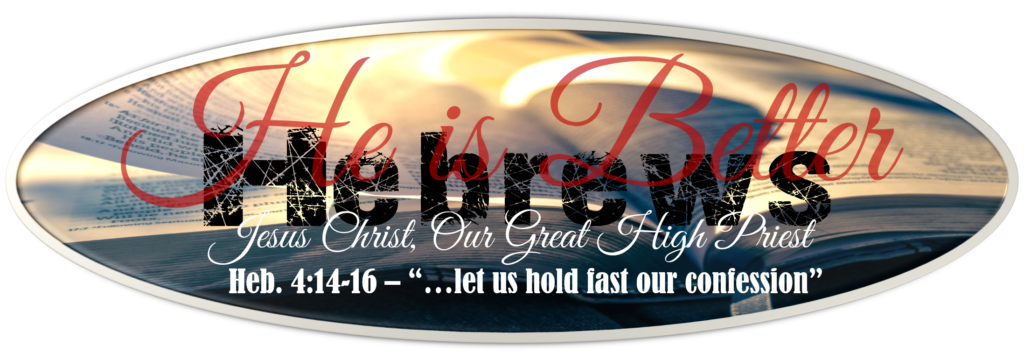
The Sanctuary of God’s Presence
In Hebrews 9, the writer proceeds to give us a thorough understanding of the priestly ministry in the Temple, giving much more detail than anywhere else in the New Testament. We grope along in our sinful condition (Isa. 59:1-2, 10),![]() we groan in life with no hope of relief. But God had a plan for our relief, a Redeemer Whom we know is Jesus Christ (Isa. 59:20). And now our Redeemer abides in the Sanctuary of God’s Presence, ministering on our behalf as explained in Heb. 8. Christ appeared to be our Great High Priest, offering “good things to c
we groan in life with no hope of relief. But God had a plan for our relief, a Redeemer Whom we know is Jesus Christ (Isa. 59:20). And now our Redeemer abides in the Sanctuary of God’s Presence, ministering on our behalf as explained in Heb. 8. Christ appeared to be our Great High Priest, offering “good things to c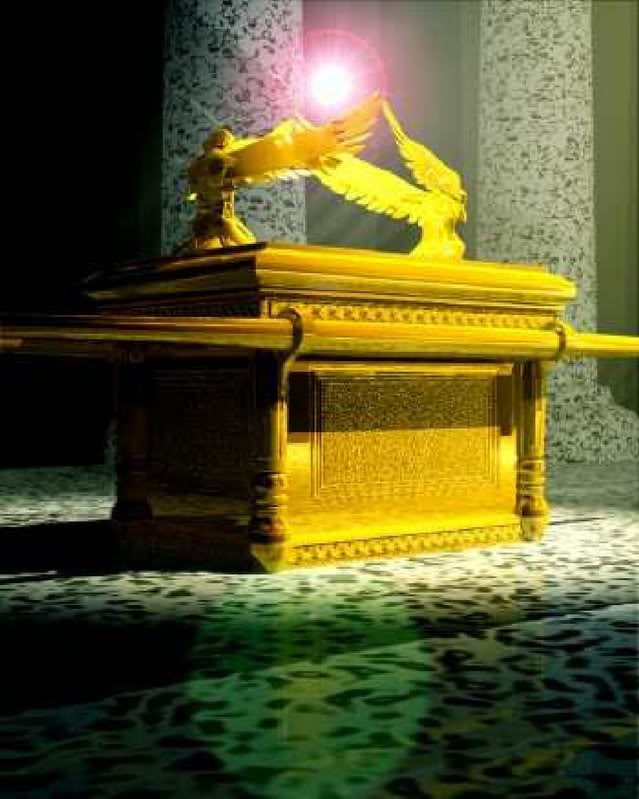 ome” (Heb. 9:11) and He finalized that provision by ascending into heaven and taking up His residence in the True Holy of Holies, the Sanctuary of God’s presence.
ome” (Heb. 9:11) and He finalized that provision by ascending into heaven and taking up His residence in the True Holy of Holies, the Sanctuary of God’s presence.
Heb. 9 now gives us a summary of how the OT Tabernacle/Temple was God’s place to provide execution of the “ordinances” which He established for His peoples’ redemption, forgiveness of sin through sacrifices offered on the altar. These guidelines were instruments God provided to demonstrate that He was providing a “covering for sin”, the daily ministrations in the sanctuary and the ongoing offering of sacrifices. This was God’s “divine” design in order to enable human representatives to demonstrate God’s inspired design, reveal His holiness and accomplish man’s redemption. Hebrews 8 reviewed with us the earth-bound limitations of that earthly worship and its human priests. Now we are going to hear about the final fulfillment of God’s provision for our Redemption in the Person and Work of Jesus Christ.
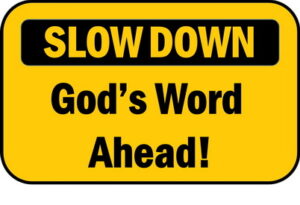 Before Proceeding… Please take a few minutes now to read through Hebrews 9. Go slowly and take the time to note the important things the writer says — highlight or underline, maybe make a couple of notes in the margin. Delight and enjoy your time in God’s Word! His Word is like sweet honey in our heart! (Psa. 119:103)
Before Proceeding… Please take a few minutes now to read through Hebrews 9. Go slowly and take the time to note the important things the writer says — highlight or underline, maybe make a couple of notes in the margin. Delight and enjoy your time in God’s Word! His Word is like sweet honey in our heart! (Psa. 119:103)

Hebrews 9:1-10, Christ’s More Excellent Ministry
Hebrews 9:1-10 gives us an Overview of the Old Covenant. The Jewish believers knew most of what is explained here, but Gentiles weren’t taught much about the Jewish faith. Verses 1-5, review the structure and furnishings of the Temple, so much beauty, detail and craftmanship, ![]() more than the writer could recount in detail (v5). The furnshings and functions have much to teach us as pictures about the realities of Jesus Christ and our salvation. As glorious as those things were, we now have our High Priest ministering in the heavenly tabernacle. Verses 6-7, the priests were busy all day every day going about their assigned tasks of ministering sacrifices for forgiveness of sin. Once a year, the High Priest would perform the duties of Yom Kippur which included placing blood on the Mercy Seat in the Holy of Holies. Verses 8-10, explains that the OT Tabernacle ministry is a symbol for us in the present time now that Jesus Christ has put His blood on the heavenly Mercy Seat. Interesting that the last word in Heb. 9:1 in original Greek manuscript is “earthly”, like an exclamation of the truth about the earthly tabernacle.
more than the writer could recount in detail (v5). The furnshings and functions have much to teach us as pictures about the realities of Jesus Christ and our salvation. As glorious as those things were, we now have our High Priest ministering in the heavenly tabernacle. Verses 6-7, the priests were busy all day every day going about their assigned tasks of ministering sacrifices for forgiveness of sin. Once a year, the High Priest would perform the duties of Yom Kippur which included placing blood on the Mercy Seat in the Holy of Holies. Verses 8-10, explains that the OT Tabernacle ministry is a symbol for us in the present time now that Jesus Christ has put His blood on the heavenly Mercy Seat. Interesting that the last word in Heb. 9:1 in original Greek manuscript is “earthly”, like an exclamation of the truth about the earthly tabernacle.
In Hebrews 9:11-28, the writer transitions to what we have in Christ today, saying “But when Christ 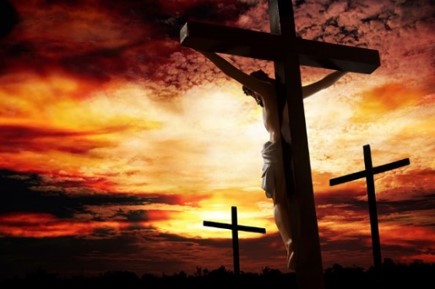 Appeared…”. Now we see Jesus Christ described in His superior priesthood based on His perfect sacrifice for our sin and how that impacts us as Christians. These are surely “good things to come” (as described again in Heb. 10:1), and he refers to these “good things” as being anticipated in the Law. Heb. 8:6 lists three “better” things of the New Covenant: a better covenant established on better promises and leading to a “more excellent ministry”. Based on our faith in Jesus Christ, we now have a cleansed consicence which allows us to have intimacy and service with God. We lost that intimate relationship with God when Adam sinned in the Garden. We have longed to have it back and now we can know God closely and meet with Him in His most private quarters – we have boldness to enter into the Holiest place through Christ (Heb. 10:19). That is the great significance of the veil in the Temple being torn in two at the death of Christ (Matt. 27:51) – Jesus has now given us all free access into the Holy of Holies.
Appeared…”. Now we see Jesus Christ described in His superior priesthood based on His perfect sacrifice for our sin and how that impacts us as Christians. These are surely “good things to come” (as described again in Heb. 10:1), and he refers to these “good things” as being anticipated in the Law. Heb. 8:6 lists three “better” things of the New Covenant: a better covenant established on better promises and leading to a “more excellent ministry”. Based on our faith in Jesus Christ, we now have a cleansed consicence which allows us to have intimacy and service with God. We lost that intimate relationship with God when Adam sinned in the Garden. We have longed to have it back and now we can know God closely and meet with Him in His most private quarters – we have boldness to enter into the Holiest place through Christ (Heb. 10:19). That is the great significance of the veil in the Temple being torn in two at the death of Christ (Matt. 27:51) – Jesus has now given us all free access into the Holy of Holies.
 Remember as you think through these study notes that it’s important to stop and read carefully the additional Scripture links. Think through how they help your understanding of the related comment and make some notes in your Study Journal!
Remember as you think through these study notes that it’s important to stop and read carefully the additional Scripture links. Think through how they help your understanding of the related comment and make some notes in your Study Journal!
The Transition of Christ’s Earthly Ministry to a Heavenly One, Hebrews 9:11-28
The writer has been “on a mission” since the beginning of this momentous letter. In Heb. 1:1-4, he lifted up God’s Son, Who we know is Jesus Christ. He proceeds to declare the Son to be “heir of all things”, a complete revelation of the glory and character of God, and holds the world together by His powerful word. Most importantly, He reminds us that Christ offered Himself as our sacrifice for sin, and is now sitting on His throne in heaven at the right hand of God. He now declares that the blood of the risen Christ enables us to be spiritually cleansed, as believers in Christ we possess completed forgiveness. We no longer need to offer up repeated sacrifices to God in order to offset the penalty for our sin. Christ now ministers in a “greater tabernacle” (v.11), He is our Mediator of a New Covenant which has provided a superior (“once for all”) sacrifice (vv. 12-15). Note in v.14 he says “how much more”, in keeping with the theme of Hebrews that “Christ is Better”, Who is now the Mediator of the New Covenant (Jer. 31:31-34). Heb. 9:16-22 then seeks to expand this by reviewing the basics of Christ’s New Covenant. Christ’s work as our High Priest is the focus here – compare additional thoughts on this key theme in Hebrews 2:18; 4:15-16; 7:25; and 8:1-2. The bottom line: God’s perfect heavenly sanctuary has received the perfect sacrifice of Jesus Christ and the presence of our Great High Priest.
The writer observes that with the completed work of Jesus as Messiah and High Priest, the OT types (copies or pictures) can now be “cleansed”, no longer encumbered by a forward look, they are fulfilled. Christ “bore the sins of many” on the Cross (see 1 Pet. 2:24). Heb. 9:28 anticipates the Rapture of the church when all believers will be ushered into Christ’s 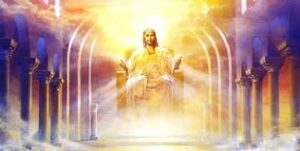 presence. Bob Deffinbaugh (bible.org) pointed out three works of salvation by Christ: first, His work on the Cross; second, v.24, His present intercessory work for us, and third, v. 28, He will finally deliver us from the presence of sin.
presence. Bob Deffinbaugh (bible.org) pointed out three works of salvation by Christ: first, His work on the Cross; second, v.24, His present intercessory work for us, and third, v. 28, He will finally deliver us from the presence of sin.
Christ is better and superior because He now resides in the heavenly Sanctuary of God’s presence (Heb. 9:24). Wiersbe provides an excellent summary of Heb. 9 as he lists five distinctives of Christ’s heavenly sanctuary from this passage: 1) it is heavenly (9:11); 2) it effectively deals with sin (9:12-15); 3) it rests on a more costly sacrifice (9:16-23); 4) it represents fulfillment of God’s promises (9:24); 5) it is final and complete (9:25-28). Be sure to read back through these verses to understand these points.
![]() Bible Study Journal
Bible Study Journal
- What does Heb. 9:1-10 accomplish and provide to the New Testament believer?
- What is Heb. 9:9-10 saying about the old Tabernacle? What time is referred to as the “time of reformation”?
- How does the born again NT worshipper today have a “perfect conscience” (9:9)? See Heb. 7:11; 9:14; 10:2,22; 13:18
- What does having a perfect conscience give the NT believer? (see for instance Heb. 10:22 & 1 Jn. 1:7)
- How does 1 Pet. 1:13-21 apply to Heb. 9?
- The “Big Break” in Heb. 9 is 9:11 – what phrase makes this transition so clear, what is it teaching us?
- Heb. 9:12, “obtained eternal redemption” – according to Col. 2:13-14, what did Christ’s death on the Cross accomplish?
- From these verses, what are five “sufficiencies” of Christ’s High Priestly work?

–



